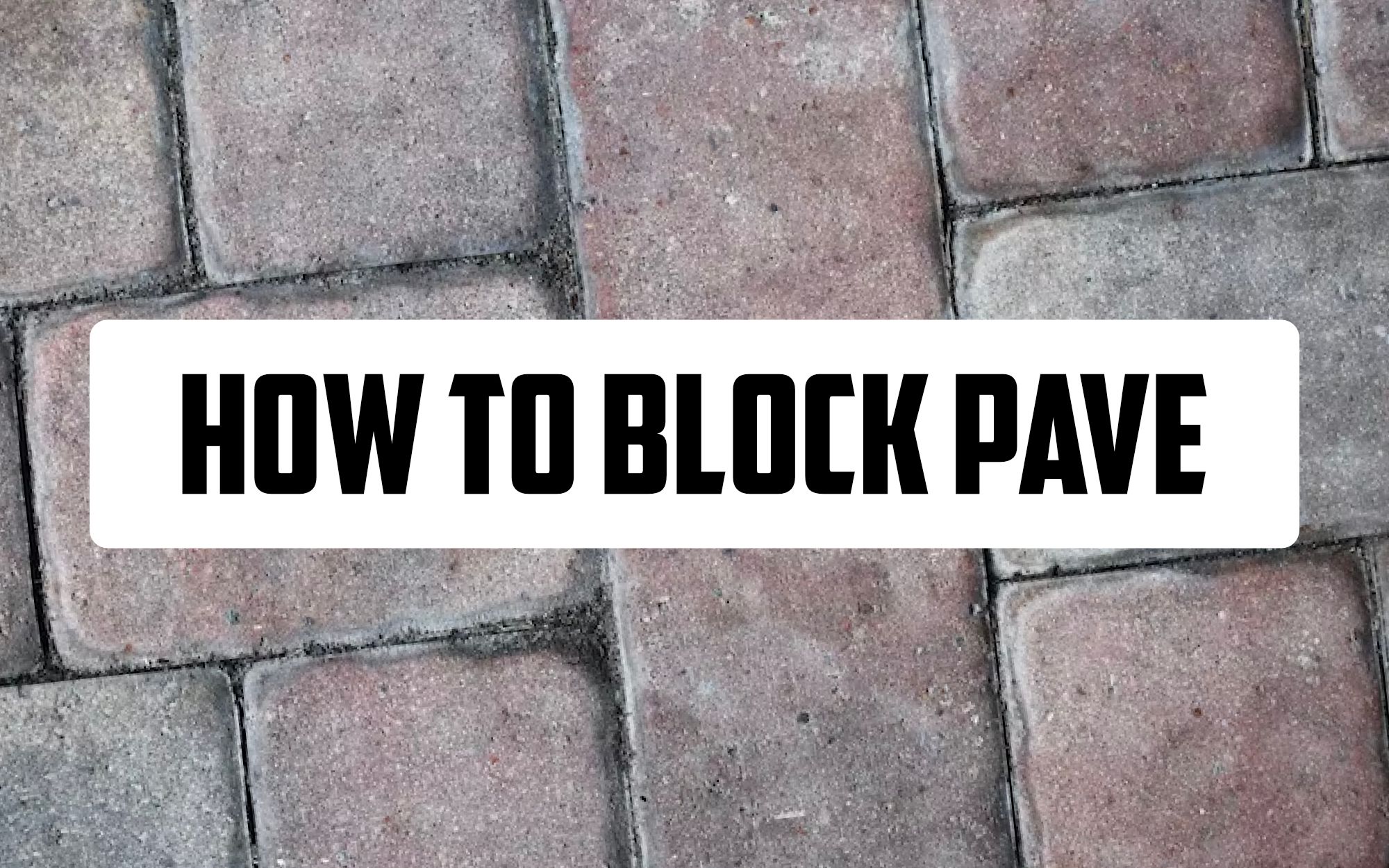How to Block Pave - DIY Block Paving
Save money and pave yourself! Read my guide on how to lay your own block paving patio, driveway or path. It's much easier than you think and can save you thousands!

From a video in the early 1990's from Marshalls, we have put together 6 simple steps on how to block pave your patio, or driveway yourself. By following these simple steps, you will save money on getting a great new patio or driveway (without paying a contractor).
With prices for single blocks as low as 47p each, you can save yourself money by laying your own block paving.
Step 1 - Prepare your foundation!

By preparing your foundation, your saving yourself some serious time in the future. Sunken drives and paths are caused by an incorrect foundation, and could result in further damage to vehicles or even you!
Use crushed stone, or any other suitable material - compact down!
Step 2 - Edge Restraint

To reduce the amount of movement of your blocks, every block paving construction must be restrained using, existing walls (ie. the side of a house), kerb or concrete edging.
Try not to use wood, this over time will degrade and cause the blocks to move. For heavy duty areas like driveways, it's always best to secure the edging with extra mortar.
Step 3 - Sand

Screeded to a depth of 60 - 65mm, once compacted will be around 40 - 45mm. Using more / less sand will cause future movement in your blocks.
To level the sand, use 2 batons either side of the area your paving, and use a straight piece of wood or straight metal bar.
Step 4 - Laying your Blocks

Lay the blocks on top of the sand being careful not to walk on the unpaved area
Choosing a pattern a vital to how your product will look, the strongest patterns are the 45 & 90 degree herringbone patterns, but most patterns will be fine providing your foundations are correctly prepared.
To see some block paving patterns click here.
Step 5 - Compacting the blocks into the Sand

Using a compactor, run over the blocks evenly compacting the base of the blocks into the sand. This ensures a tight stable block paved area ready for finishing.
Step 6 - Finishing

Brush fine sand (usually called sharp sand or jointing compound) into the blocks joints ensuring all gaps are filled. Using a compactor, run evenly over the blocks and your driveway / paving project is complete.
After 1 - 2 weeks it's recommended that you apply more sharp sand to your blocks, this will fill any gaps caused by movements in the ground / blocks.
Finally, to give your blocks added protection, coat the complete area with a block paving sealant. This protects your block paving keeping your lovely paved area always looking its best.
